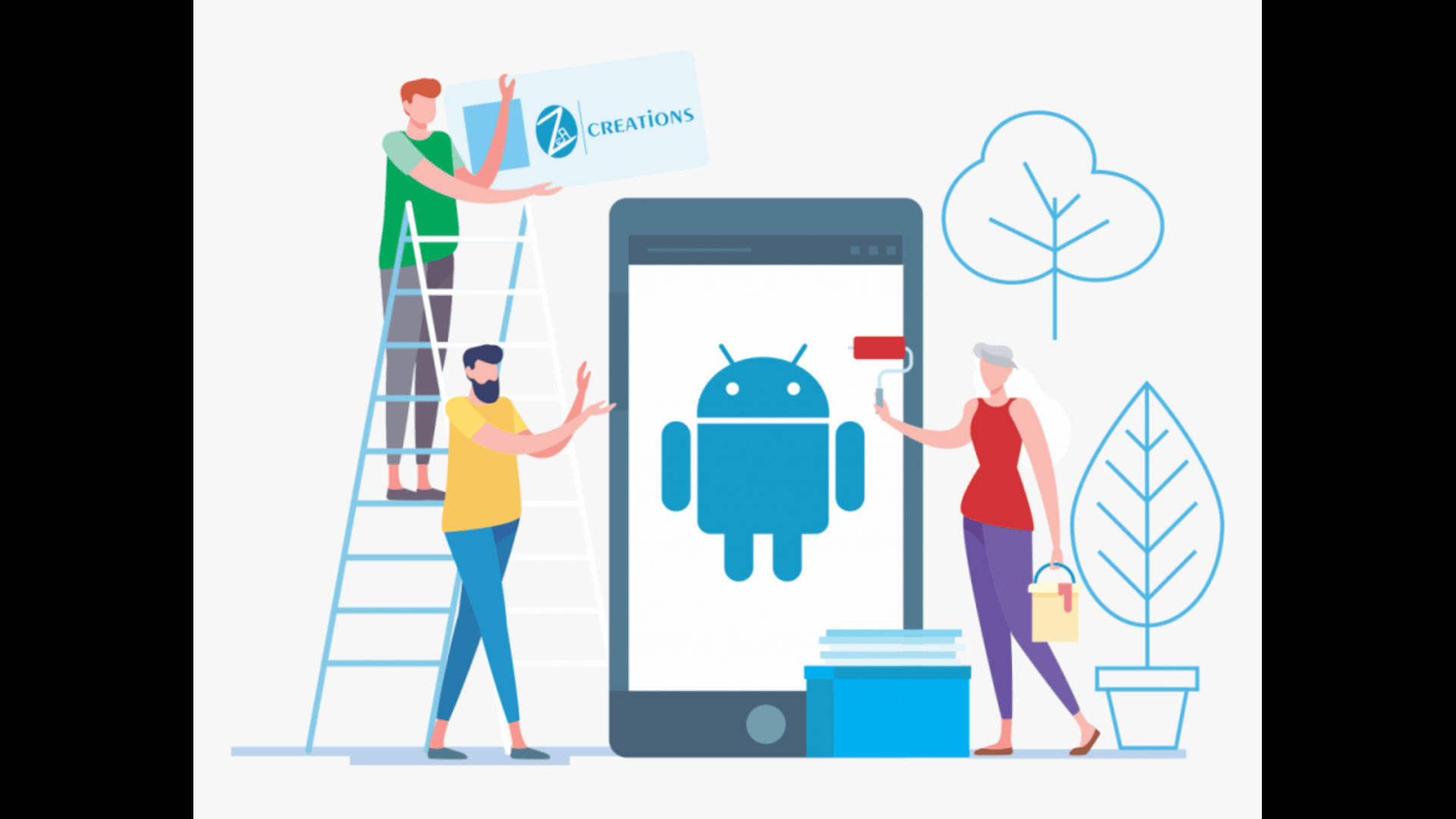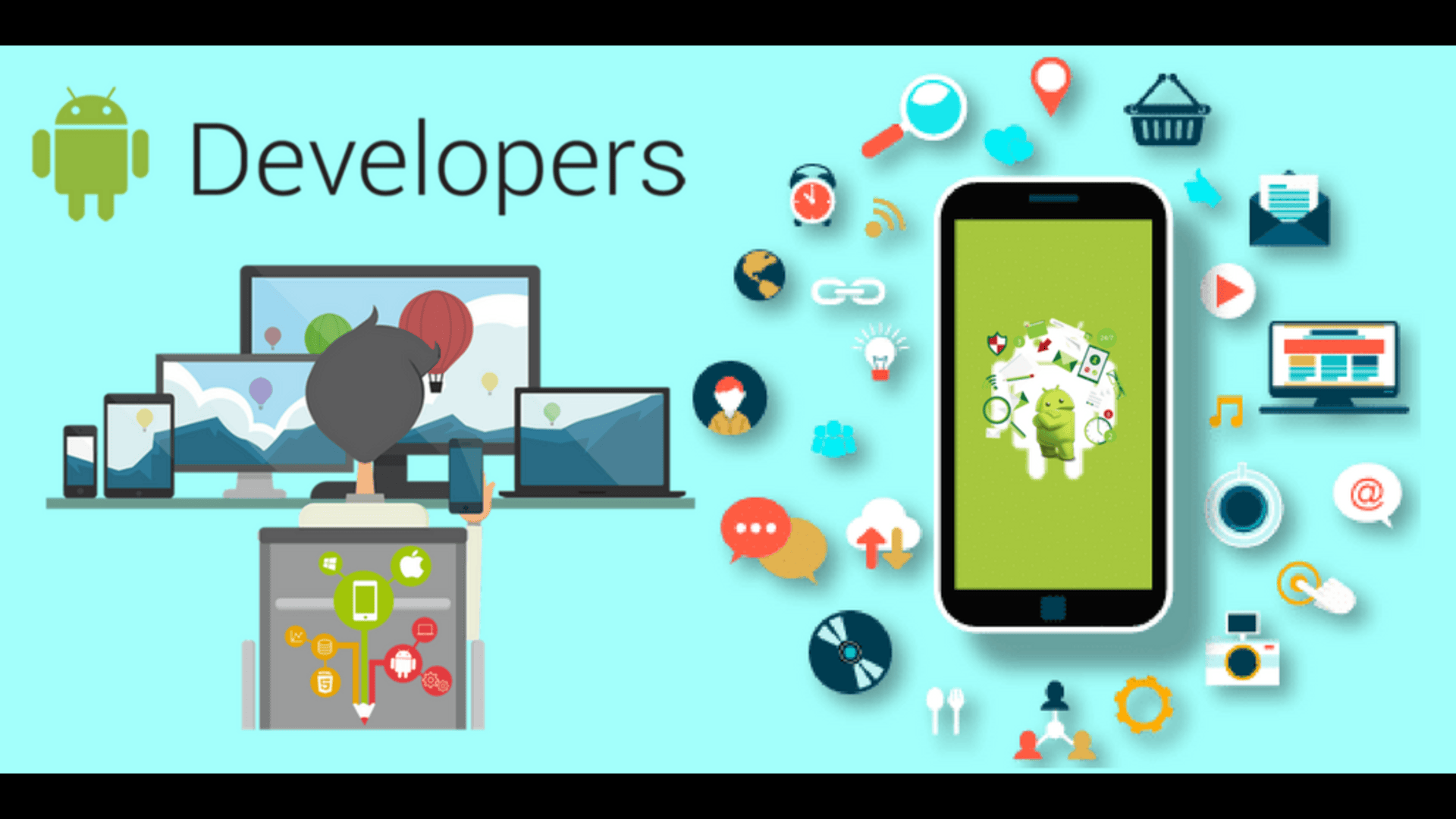Take a step back and consider how far Android development has come—its evolution has been nothing short of extraordinary. As the world’s leading mobile operating system, Android continues to drive innovation, shaping the future of mobile experiences. With new technologies emerging and industry demands shifting, hiring skilled Android developers has never been more critical. To build a competitive and future-ready mobile team, companies need developers who not only understand the latest trends but can also leverage them to create impactful solutions. The right talent, combined with cutting-edge technology, is the key to success in today’s fast-moving digital landscape.

The Rise of Kotlin in Android Development
Kotlin has rapidly gained traction as the go-to language for Android app creation. Whether you’re a seasoned pro or just starting out, this platform’s user-friendly code and emphasis on security mean you can spend more time building and less time worrying about the what-ifs.
Kotlin’s null safety mechanism helps prevent common coding errors. By design, variables cannot hold null values unless explicitly defined. Null pointer exceptions, a developer’s worst nightmare, are dramatically reduced thanks to this ingenious safeguard.
Java codebases get a seamless boost when integrated with this language, making the transition smoother. Developers can incrementally introduce Kotlin into projects, mixing it with Java as needed. With flexibility on our side, we can orchestrate a seamless transition, step by step.
Kotlin’s coroutines simplify asynchronous programming. Cleaning up background tasks and network calls has never been easier; developers can finally concentrate on writing sparkling code that gets the job done. More agility means apps that zip along, responding swiftly to every tap and swipe.
With Kotlin rapidly gaining traction, companies are now on the hunt for developers with the expertise to take full advantage of this versatile language. Companies looking to modernize their Android offerings should prioritize hiring Kotlin-savvy talent.
Jetpack Compose: Revolutionizing UI Development
Jetpack Compose marks a paradigm shift in Android UI creation. Say goodbye to tedious interface-building: this toolkit’s declarative approach gets you dynamic, responsive results in no time, every time.
With Compose, developers describe UI elements and their behavior using concise Kotlin code. With the framework handling the tedious rendering details, you can breeze past the usual startup clutter and get down to business. UI code gets a lot better when you use this approach – it’s like having a well-organized toolbox at your fingertips.
With Compose, building fluid animations into your project is a walk in the park – just think of the impact that added wow factor will have on your users! Visuals don’t have to be a chore; developers can easily create captivating ones. The real payoff is a more cohesive and engaging experience that users will love.
Imagine being able to build on your previous work instead of starting from scratch – that’s what this toolkit’s reusable functions offer. Developers can easily create modular, customizable UI components. Imagine being able to wrap up development quickly and having all your apps speak the same language – that’s the beauty of this approach.
As Jetpack Compose gains popularity, being proficient in this toolkit becomes a major advantage. Businesses should seek Android developers well-versed in Compose to leverage its benefits.
Harnessing AI and Machine Learning in Android Apps
Artificial intelligence and machine learning are transforming Android app capabilities. With these innovative tools, users can enjoy customized interactions and simplified workflows.
Natural language processing powers more sophisticated voice interfaces. Android apps can now understand and respond to nuanced voice commands. It’s a whole new frontier: hands-free, fingers-free, completely liberated from the need to physically interact with our devices.
Camera features get a significant boost with the help of computer vision algorithms. Apps can recognize objects, faces, and text in real-time. Imagine snapping a photo and instantly having it sorted into a relevant album, thanks to intelligent organization. That’s the magic we’re talking about here – augmented reality that redefines how we interact, and smart photo sorting that redefines how we remember.
Apps get better at reading minds when they have predictive analytics on their side. Picture this: your app identifies recurring patterns in your workflow, distills them into nuggets of wisdom, and helps you create customized workflows that get you where you need to go, fast. This translates to a far more comfortable interaction for everyone involved.
Implementing AI and ML effectively requires specialized skills. Focus on hiring Android developers who’ve mastered these essential technologies from the ground up.
5G: Unlocking a New Era of Innovative Android Apps
Imagine a future where your mobile device can do it all – and that’s exactly what 5G networks are promising to deliver. Say goodbye to buffering wheels and hello to effortlessly streaming videos, all thanks to the blistering pace and zero-lag performance of next-generation cellular tech.
5G enables seamless streaming of high-quality video and audio content. Android apps can now deliver 4K and even 8K video without buffering issues. This breakthrough brings a fresh wave of possibilities for entertainment and learning.
Augmented and virtual reality applications benefit greatly from 5G’s low latency. Augmented and virtual reality just got a lot more real – developers are empowered to craft interactions that feel truly lifelike. With this new development, gamers will become more immersed, trainers will become more effective, and remote teams will become more productive.
5G’s increased bandwidth supports more simultaneous connections. With high-speed data exchange enabled, the stage is set for innovative IoT solutions to emerge. Android apps can now coordinate multiple smart devices in real-time.
Companies looking to tap into the speed and power of 5G should priority-hire Android developers who know how to tweak their apps for warp-speed connectivity.
Progressive Web Apps: Bridging Web and Native Experiences
Progressive Web Apps (PWAs) are gaining momentum in the Android ecosystem. The magic happens when web applications can replicate the intuitive feel of native apps while still being accessible to everyone on the web.
PWAs can work offline, leveraging caching strategies to function without an internet connection. Patchy coverage no longer means patchy performance – this advance simultaneously ups the ante on reliability and user delight.
Push notifications, once exclusive to native apps, are now possible with PWAs. This invites web apps to forge a deeper connection with users, skyrocketing retention rates and conversions in the process.
PWAs can be installed directly from the web, bypassing app stores. Simplifying distribution and updates means everyone wins – developers get to focus on the good stuff, and users get a better experience.
As PWAs grow in popularity, Android developers skilled in web technologies become increasingly valuable. Rather than relying solely on in-house resources or outside partners, businesses might find that a collaborative approach to mobile development yields the best results.
Edge Computing: Bringing Processing Power Closer
Edge computing is emerging as a game-changer for Android app performance. When you bring data processing right to the source, edge computing’s latency melts away, opening the door to instantaneous action.
Mobile gaming benefits significantly from edge computing. To avoid bogging down devices with intensive calculations, edge servers can pick up the slack, allowing for the creation of more intricate, absorbing games.
In today’s fast-paced digital landscape, IoT applications must be able to react swiftly, and that’s exactly what edge computing allows them to do – make lightning-fast decisions that matter. Android apps can process sensor data locally, triggering immediate responses without relying on cloud round-trips.
By localized processing and analysis, edge computing protects your personal info from prying eyes, effectively doing away with long-distance data transmission. Sensitive information can be processed on-device or at the network edge, reducing exposure to potential breaches.
Edge computing relies on architects who can balance load across different systems and builders who know how to craft edge-friendly infrastructure – especially if they’re well-versed in Android.
Augmented and Virtual Reality: Immersive Android Experiences
Augmented Reality (AR) and Virtual Reality (VR) are pushing the boundaries of what’s possible on Android devices. Think video games, but instead of controllers, players use their surroundings – that’s what these technologies offer, dynamic mashups of digital and real-world interactions.
AR-enhanced shopping apps allow users to virtually try on clothes or visualize furniture in their homes. With online shopping made easy, customers reap the benefits of a streamlined experience and shipping boxes headed back to retailers are few and far between.
Educational apps leverage AR to bring textbooks to life. Imagine being able to simplify complex ideas with a click – that’s what 3D models and interactive simulations offer, giving students a clearer understanding of the material.
VR gaming on Android devices offers deeply immersive experiences. As Android steps up its VR game, it’s becoming clear that top-notch virtual reality content is now a realistic expectation.
AR and VR app development requires more than just coding know-how – it calls for specialized expertise. When hiring an Android developer, prioritize those with a background in 3D graphics, spatial computing, and motion tracking; they’ll give your project the edge it needs.

Enhanced Security Measures: Protecting User Data
As Android apps handle increasingly sensitive data, security remains a top priority. Safety conscious developers are rallying around reinforced measures to deflect threats and earn users’ trust.
Biometric authentication, including fingerprint and facial recognition, offers convenient yet secure access to apps. We’re talking a two-pronged approach here: elevating user satisfaction while slamming the door shut on unauthorized access.
When data is sent or stored, end-to-end encryption seamlessly engages, fortifying it against would-be snoops and Nosy Parkers. Messaging and financial apps that deal with sensitive info need to get this right, no exceptions.
Runtime app self-protection (RASP) techniques detect and prevent attacks in real-time. To really boost security, apps are safeguarded even if someone’s device has been infiltrated.
Protecting sensitive data is no joke, so companies should look for Android developers who’ve got the cryptography credentials and the coding chops to build secure apps that can withstand even the sneakiest attacks.
Conclusion
Android’s pace of change is seriously quickening, fueled by revolutionary tech and shifting user priorities. As Kotlin steals the spotlight and edge computing redefines the game, the art of mobile experience creation is being transformed from the ground up.
Staying ahead of the curve in mobile means being proactive, not reactive, to the latest innovations. This often means enlisting the expertise of skilled Android developers who can navigate the complexities of modern app development.
If you’re considering expanding your Android development team, Coders offers a curated selection of top-tier Android developers in the USA. Got an Android project in mind? This platform finds you developers with the right expertise to bring it to life.
With Android apps, companies can prep for the future and still satisfy current demands – as long as they’re working hand in hand with developers who know the ropes. The Android scene is exploding, and devs who flex with the times will find themselves right at home in this dynamic, fast-paced environment.


